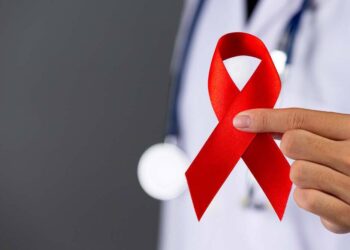The World Health Organisation (WHO) has revealed that nearly 2.5 million people fell ill and 424,000 lives were lost to tuberculosis in the African region alone in 2022.
About 70% of tuberculosis (TB) cases in the African region are now being diagnosed and treated, marking the highest case-detection rate in the region ever, thanks to concerted efforts by countries to address the threat of the disease.
The WHO report
According to the World Health Organization (WHO) Global Tuberculosis Report 2023, the case detection rate has been on the rise since 2018, with a significant increase observed between 2020 and 2022, rising from 60% to 70% of cases being detected.
- Notably, there has been a reduction in the number of people with TB who miss diagnosis, with an estimated 700,000 people missed diagnosis in 2022, representing a 10% reduction compared with 2021.
- World TB Day marked this year under the theme “Yes! We can end TB,” aims to rally efforts to end the disease through global initiatives focused on detection, diagnosis, and treatment.
- Several factors have contributed to boosting TB diagnosis rates in the African region.
- During the COVID-19 pandemic, many countries maintained TB notification services, ensuring that cases were detected and treated.
Tuberculosis in Nigeria
Nigeria, which bears a significant TB burden, witnessed a nearly threefold increase in case notification over the past five years, with 285,000 cases reported in 2022 compared to 106,000 cases in 2018.
- Improvement in the management of HIV infection, a significant driver of TB, has also strengthened TB detection rates in the region.
Dr. Matshidiso Moeti, WHO Regional Director for Africa, emphasized the need for continued efforts to reduce the devastating impacts of TB on families and communities. While progress has been made, further action is needed to accelerate momentum towards making TB history.
What you should know
The African region, which accounts for 23% of TB cases and 33% of deaths globally, is making steady progress towards ending the disease.
- Countries like Cabo Verde, Eswatini, and South Africa have achieved at least a 50% reduction in TB cases.
- The WHO End TB Strategy calls for countries to reduce TB deaths by 75% and cases by 50% by 2025 compared to 2015 levels.
- Despite progress, additional efforts are required to meet the 2030 global End TB Strategy targets of cutting TB deaths by 90% and cases by 80%.
- This includes increased investments in TB control programs. In 2022, the Global Plan to End TB 2018-2022 estimated that US$ 3.9 billion annually were required to achieve the targets in the African Region, but only around US$ 890 million were mobilized for TB prevention, diagnosis, and treatment.
Challenges such as limited access to health services, inadequate health infrastructure, insufficient quality of care, inadequate human resources for health, and inadequate social protection continue to impede progress in ending TB.























